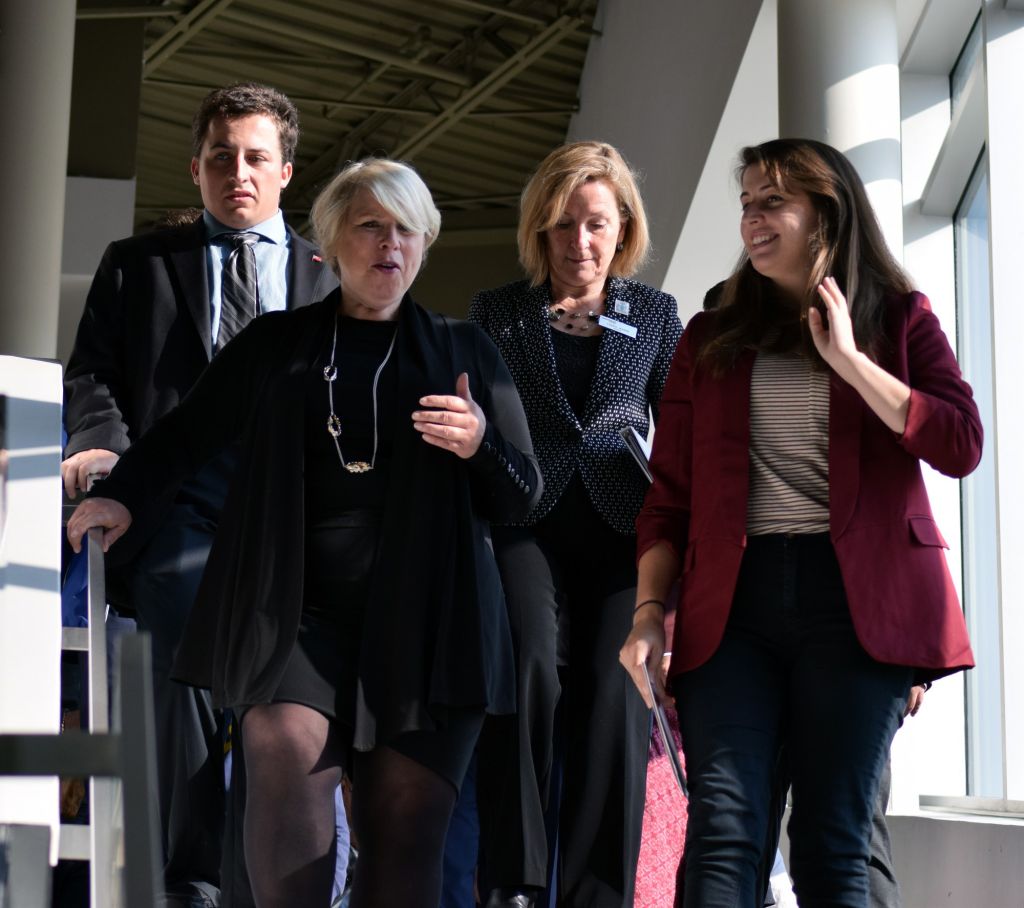Students won’t have to repay their OSAP loans until they’re making at least $35,000, starting next year, instead of the current $25,000 minimum threshold.
Deb Matthews, Ontario’s minister of advanced education and skills development, made the announcement during a visit to Algonquin College on Monday that also included a round table discussion with students and other announcements.
“One in two students… now have free tuition,” she said in a speech, heralding recent changes to OSAP. “I’m extremely pleased with the success of this system.”
OSAP was overhauled last school year to provide more money for students across many income levels, as well as to provide those considered low-income with “free” tuition by giving them more grants than loans to cover school fees. The application was also simplified to four steps.
Students can get assistance from OSAP even if their family has a combined income of up to $175,000, she said. An additional 50,000 students have applied for OSAP this year compared to last.
“It’s not just for lowest income students; it’s also well into the middle class,” she said. “We designed it in a way so that nobody got less.”
During a private round table with students Matthews said she received feedback on how to better improve the system, including offering OSAP payments in monthly amounts rather than a lump sum.
The issue of academic streaming – when high school students choose whether to take college or university-level courses — was also brought up. Matthews said it was a problem that needs to be addressed by the government.
“What I can tell you is when kids are told they don’t have potential, before that potential is demonstrated, we have a problem,” she said. Matthews added that the issue is being looked at by the Ministry of Education.
Future changes the province is making will benefit students greatly, such as raising the minimum wage to $15 an hour by 2019 and offering free student pharmacare, Matthews said.
A new government website, ecampusontario.ca, will also allow students access to textbooks free of charge.
The program was borrowed from a similar one in British Columbia, where it was estimated to have saved students $4 million since 2012. It works by paying authors once to write public domain textbooks – cutting costs as there are no royalties.
“They’ll not just save you money, they’ll also save you wear and tear on your back and shoulders,” she joked. Professors will still have to choose whether to use them so students should make their opinions known, she said.
Victoria Ventura, president of the Algonquin Students’ Association, took the occasion to make an announcement of her own.
The Students Association will spend $1 million to include Indigenous architecture, art and artifacts in the Innovation, Entrepreneurship and Learning Centre, which is under construction next to C-building.
“We just saw increasingly because of budget pressures the Indigenous pieces (originally planned for) became increasingly tentative,” said Ventura, so the SA wanted to ensure they are included.


